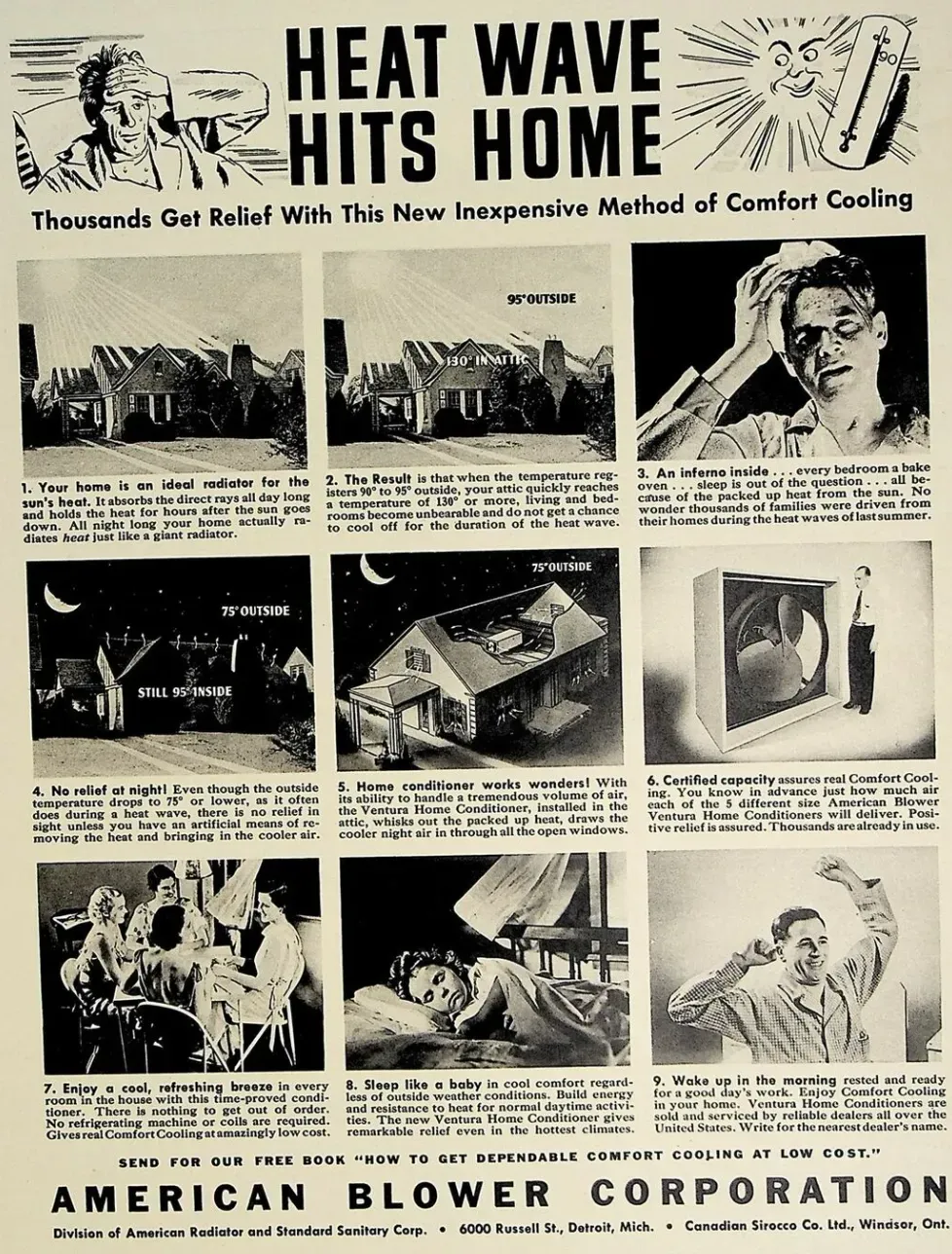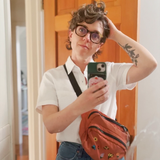Heat Domes + Fire Crumbs
Pregnant during a once in a lifetime heat wave that happens twice every summer.

There’s a heat dome over the Pacific Northwest. Heat dome kind of sounds like the hellfire version of a snowglobe. But instead of a winter scene magnified by water and curved glass, it’s a region cupped in heat and haze. Today Portland will hit 114 degrees and Seattle will peak at 110 degrees, each breaking their previous all-time high. Both of which were set yesterday.
Some outlets are reporting this heat dome is a once in a millennium event. In the past that might have been true. In the future, it will be a more than once in a lifetime event. Climate change didn’t create heat domes, but it’s making them worse. It makes “heat more extreme and extreme heat more likely.” We haven’t built a world that can handle more extreme heat. Power cables are melting, roads are buckling and the power grid is at risk of failing. And the people trapped under the dome cannot get cool.
The heat dome has settled over a place with vanishingly few air conditioners. Nationally, 91% of residences have air conditioning installed, in Seattle that number hovers at 44%. There’s been little cause in the past decades to have a/c in the Pacific Northwest. Average midsummer temperatures are in the low seventies. But we're not in the past. We're in the first moments of the future. And parents, many of them pregnant, are trying to figure out how to get their children through this once in a millennium, once in a lifetime, routine event.

In 2017, I was seven months pregnant when the Bay Area experienced a record breaking heat wave. Oakland, where we lived, crested to 101 degrees. It was the second record breaking heat wave to hit the Bay Area within three months.
We lived in a little house without air conditioning. Everyone we knew lived in homes without it. I’d found the lack of air conditioning odd when we’d first moved to Oakland. In Southern California, a majority of residences had air conditioning or swamp coolers. In the Bay Area, it seemed like only museums and grocery stores had cooled air. I wasn’t so far off, only four in ten dwellings in the San Francisco metro area have a/c. Long-time residents assured me this was a feature, not a bug. It simply never got hot enough, long enough to justify the financial or environmental cost of an air conditioning unit.
That was true in the past. But it wasn’t true by the time we lived there. Every summer we lived in Oakland, temperatures soared and records broke.
The hottest day of the 2017 heat wave came after many hot days. We were already exhausted by warmth. We woke up from a hot night to a heating morning. I laid out a blanket for my two kids on our floor in front of the tv. They each had a big cup of ice water and ice cream for breakfast. I wanted to keep them still and sated with movies and frozen treats. Maybe then the day would feel more like a memory and less like something to survive. My ankles and feet were swollen from the heat. My fingers were thick too. I laid down on the couch with a pillow under my legs.
I’d propped box fans in our open windows. If I kept the hot air moving maybe it wouldn’t smother us. The problem with that moving air was what moved with it. Smoke from wildfires had drifted down to the Bay and then lingered in the stopping heat. My carefully placed fans brought that smoke and grit into our home. My oldest has always had respiratory problems. Every cold turns into a trip to the doctor for a breathing treatment. She coughed and cleared her throat while the fan blew polluted air across the top of her head. My own lungs felt thick and slow.
I pressed against my stomach to feel my gestating daughter push back against me, I was grateful my body acted as a filter for hers. That she didn’t have to use her lungs yet. But I worried about my daughters out in the air. The temperature in the house climbed. Our thermostat read 87 degrees by 9am. My oldest kept coughing. We needed filtered, cooled air.
I found shoes that would fit across my puffed feet and drove the girls to the Oakland Museum of California. It was one of our favorite places in Oakland. It’s the only museum dedicated exclusively to the history, art and environment of California. My daughters considered themselves of California and felt like the museum was about them. When we got there, it was crowded but cool. My oldest stopped coughing. My feet stayed full, but my fingers deflated a bit.
The girls moved in and out of exhibits about ancient forests, the gold rush, Black Panther mutual aid, labor strikes, Japanese internment camps and the Arts + Crafts movement. Epochs that made and marred California. I wondered what the future exhibits for this era of dry heat and licking fire would look like. We knew the museum by heart, but the kids took their time. No one wanted to go home.
It was too expensive to get us each a meal in the crisp cafeteria, but we could share one. They split the hot dog, I ate the piece of fruit. We all shared the chips. I told the girls we were lucky. We’d been able to pay admission to the museum to get into the cool air. Too many people in Oakland couldn’t afford to do the same. (During later heatwaves and wildfires, OMCA offered free admission to everyone.) We stayed until it closed.
When we got home, the inside of our house was 94 degrees. The temperature of our house dropped just three degrees that night. We couldn’t afford to go to a hotel. Even if we could, they were all booked. The kids cried as they got ready for bed.
Mom, it’s so hot.
In past heat waves, Riley and I filled ziploc bags with ice and placed them on our girls’ hands, arms, legs, stomach. We did it again that night. The ice melted so quickly, we had to refill the bags twice before the kids drifted into fitful sleeps.
As I moved back and forth from their room with ice and promises of cooler days, I pushed against my stomach over and over again. I was desperate to feel the baby move. It was so hot and I couldn’t put ice packs on her toes or against her neck. I wanted her out in the air where I could see how she was doing.
Riley kept telling me she was okay. He said my body was regulating her exposure to the heat with my sweat and panting breaths. And I knew, intellectually, that he was right. But my overheated heart could not fathom how she’d survive nested in my heat as I nested in the heat wave. She was responsive to my fear, moving gently against every poke.
After the kids slept, I sat on our couch with a bag of ice pressed against my rising stomach. Riley called from the backyard,
“Meggi, come here.”
Backyard might be a big word. It was more like a small strip of fenced-in grass. A luxury in Oakland. He'd set up an old hammock on that strip. We didn’t have sprinklers but we did have a sprinkler attachment for our hose. Riley had it turned to its lowest, mistiest setting. The water moved back and forth over the hammock. He gestured to the hammock, a little abashed,
“Maybe this will help?”
He helped me into the hammock and pushed it gently. My body moving one way, while the mist fell across it another. I felt nearly cool. I only pushed against my stomach once before drifting off. Riley sat out there with me and turned off the water after I fell asleep. I woke up a few times in the night, when he came out to check on me. Each time, he pushed against the hammock and my body swayed back.
My baby inside of me and my babies outside of me woke up the next morning. But not everyone did. Some died of heatstroke inside of their homes. The most vulnerable are always the ones hurt first by extremes.
The heat spent itself eventually. And we breathed in deeply, but only for a few weeks. The Tubbs Fire started a month later. It burnt up thousands of homes and killed dozens of people. Huge flakes of ash moved through the air and coated roofs, cars and the tops of our heads. They blotted out the sun and stuck in our eyelashes. Walking home from school, my six year old held out her hand and caught grey flakes in her hand. She inspected them,
“Mom? What’s in firecrumbs?”
The answer was living room walls, bed frames, family photos, trees, fences, the bones of animals and people.
It was a bad answer. So I just said,
“Firecrumbs? That’s a great word. This is called ash.”
“Oh, so ash is in firecrumbs?”
“Yeah, ash is in firecrumbs.”
We went inside and kept the windows closed.

